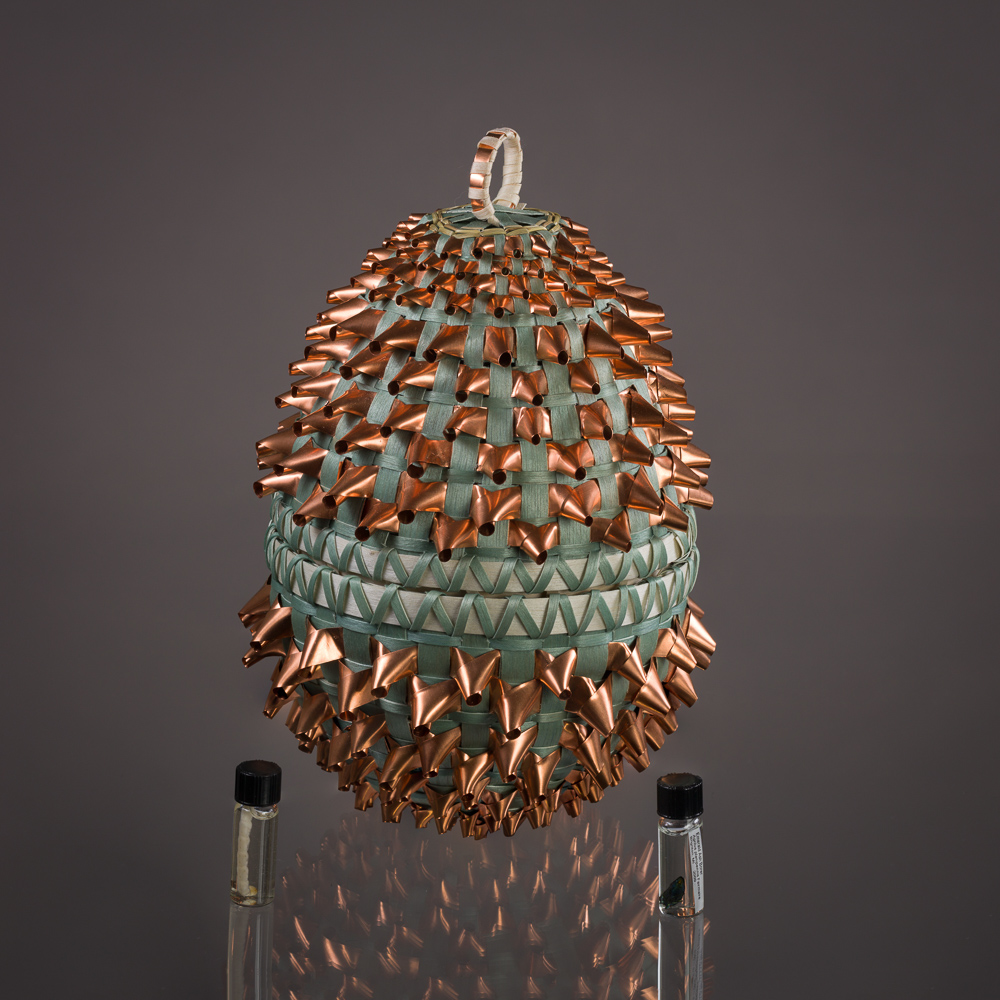
Kelly Church, Warning: Contents May be Dangerous to Cultural Traditions, black ash splints, sweetgrass, rit dye, copper, velvet, (inside). vial with EAB larvae, vial with EAB, 8 1/2″ height x 4/1/2″ width; this basket opens to the vials with the emerald ash borer and larvae, shown pictured next to basket.
Kelly Church and Cherish Parish share the Anishnabe knowledge of black ash baskets and their fight against the invasive species that threaten its future.
The black ash tree grows in the North Eastern US and Southeastern Canada. It has been used by native nations living in these areas for countless centuries.
The Ojibway word for basket is kookobaninagan. A word we would use to describe black ash basket making in our Anishnabe language is zoon gan, meaning it is solid, it is strong.
Our basket making teachings have sustained countless centuries of colonization, but yet we were able to carry these teachings on throughout the generations. Our baskets existed before the United States existed. A black ash basket will last over 100 years because the materials are strong, and the weaving makes them stronger. We work together as a family to harvest trees and process the materials, which makes us stronger as a family both physically and mentally. Sustaining our traditions from the past to the present is a sign of strength as well.
My family has been making black ash baskets for countless centuries. We have a photo from 1919 of my family weaving baskets, counting me as a fifth-generation black ash basket maker. But as my grandmother once said, “We made baskets before they made cameras.” These baskets have existed before this country existed.
- Kelly Church, Grandmother Strawberry, 16″ height x 16″ diameter, Black ash splints, Rit Dye, sweetgrass, leather, hair, size 22 seed beads; this basket represents our grandmothers who teach us, and the blossoms and mini berries represent future generations.
- Kelly Church, Anishnabe Treaty Top hat, black ash splints, birch bark, copper, Map of 1836 treaty, in vials: wter, black ash seed, wild rice, maple sugar, 12″ height x 10″ diameter, this woven basket shows our ceded treaty area, and items we harvest from these ceded areas based on our treaty rights.
Kelly: I began weaving baskets after caring for my grandparents and listening to my grandfather talk about his mom and her baskets. When a man came to mow the lawn, or a woman would bring food for them…. my grandfather used to say “ we need to make that person a basket to say Thank you” So one day my dad, Bill Church, took me to the woods to harvest a tree and showed me how to make baskets, so I could make those baskets to say “thank you “.
- Cherish Parrish, Four Directions, set of four baskets each 10″ height x 5″ diameter, black ash splints, sweetgrass, and rit dye for colors, Eastern direction- yellow, Southern direction- Red, Western Direction – black, Northern direction – white (natural color); these baskets represent the colors and stages of life of our 4 directions.
- Cherish Parrish, “Western Direction” part of “Four Directions “, black ash splints, sweetgrass, rit dye for color, 10″ height x 5” diameter; This is a basket woven in the shape of a woman, woven with black;our color for the western direction. It is part of a 4 part series called “Four directions”
- Cherish Parrish, The Next Generation, Black ash splints and Sweetgrass, 23″Height x 14″ width; this basket is woven in the shape of a woman in mid pregnancy.
Cherish: I began weaving baskets after my mom and my cousin John Pigeon, showed me how. My mom was putting on basket gatherings, which I was always a part of, and my fondness of basket making grew from there.
A good basket tree has straight bark and suitable size growth rings for baskets. Once a tree is selected, tobacco is offered and the tree is harvested, cut into logs, and carried out of the forests on the shoulders of the harvesters.
A black ash tree is 25+ years old before it can be harvested. It seeds every 5-7 years. Seeds take two years to germinate. It leaves late in summer and loses its leaves first in the fall.
Black ash baskets are made from the growth rings of the black ash tree. A tree is harvested and cut into logs. Each log is debarked from end to end. The backside of an old axe is used to pound down the length of the log, from end to end, just as hard as if you were chopping wood. This separates the fibers in between the growth rings and causes them to separate and release. Each growth ring is then split in half from end to end, and inside the growth ring the material is shiny and smooth. This basket is woven with the inside of the growth ring of the black ash tree, on the outside of the basket. The basket shows the beauty of this magnificent tree.
The log is debarked about two inches in width from end to end and pounded on with the backside a very old axe. The pounding separates the fibers in between the growth rings and they “pop up’ and release. Each growth ring is scored about an inch from the top and “peeled” in half, exposing the inner part of the growth ring that is smooth and silky. The outside of the growth ring is rough to the touch, and is scraped smooth with a knife. The inner part of the growth ring is normally woven on the outside of the basket and the outside of the growth ring is woven on the inside of the basket.
In the late spring, early summer months, when the sap is running, the bark will “peel” off the log in one big piece. It is very flexible and can be cut and shaped into black ash bark baskets. The bark begins to harden and cure soon after peeling and bark baskets need to be made soon after being peeled off.
These baskets are then shaped into the desired shape and “sewn” together with strips of black ash, spruce, roots and “cured” for a few months. These were used for collecting berries, wood or gathering of any needs.
- Kelly Church, Past and Present, Vinyl Blind, String, Photographs, 10″ height x 8″ diameter, This basket is part of my “7th generation Black ash basket Series” depicting what a black ash basket will look like in the future, should the Emerald ash borer decimate all of our ash trees as predicted. It is to show that we will be able to pass on our weaving methods with other materials, but will lose 75% of the black ash teachings if we lose the trees. We will no longer be able to choose a tree, harvest the tree, process the growth rings, which equates to 75% of the work we do to make a basket.
- Kelly Church, Fancy Embellished 7th generation black ash basket, vinyl Blinds, string, and ribbon, 10″ height x 8″ diameter; this basket speaks to the same story as the vinyl blind basket above, but encompasses 3 embellishments woven into it, showing the capabilities of manipulating man made materials like black ash splints,….remembering our weaving methods should our trees be lost.
The Emerald ash borer was introduced into the US into the Port of Detroit in Michigan in 1992. Thousands of ash trees died before it was finally discovered in 2002. The EAB is emerald green with a copper belly. EAB can kill an entire ash stand in 3-5 years. It is now in over 23 states and two provinces in Canada. The USDA predicts the entire ash resource of North America will be decimated by EAB. We have lost over 500 million ash trees in Michigan alone.
When we follow our black ash traditions, we have to first learn our tree identification. This is done through teachings of what the bark and leaves in summer and leaf buds in the winter look like. EAB destroys the bark and first few layers of growth rings, so black ash bark baskets are becoming a rarity, and harder to make. These bark baskets will become invaluable to future generations as black ash basket makers continue to pass on these teachings should the trees be wiped out.
Our hopes are that seeds collected today will be replanted by future generations and, after they have grown a few decades, a few can begin to be harvested to continue these teachings. These black ash bark baskets will provide the teachings about how to identify bark in this “down” period and will assist future generations in remembering their teachings.
Black Ash Teaching Tools
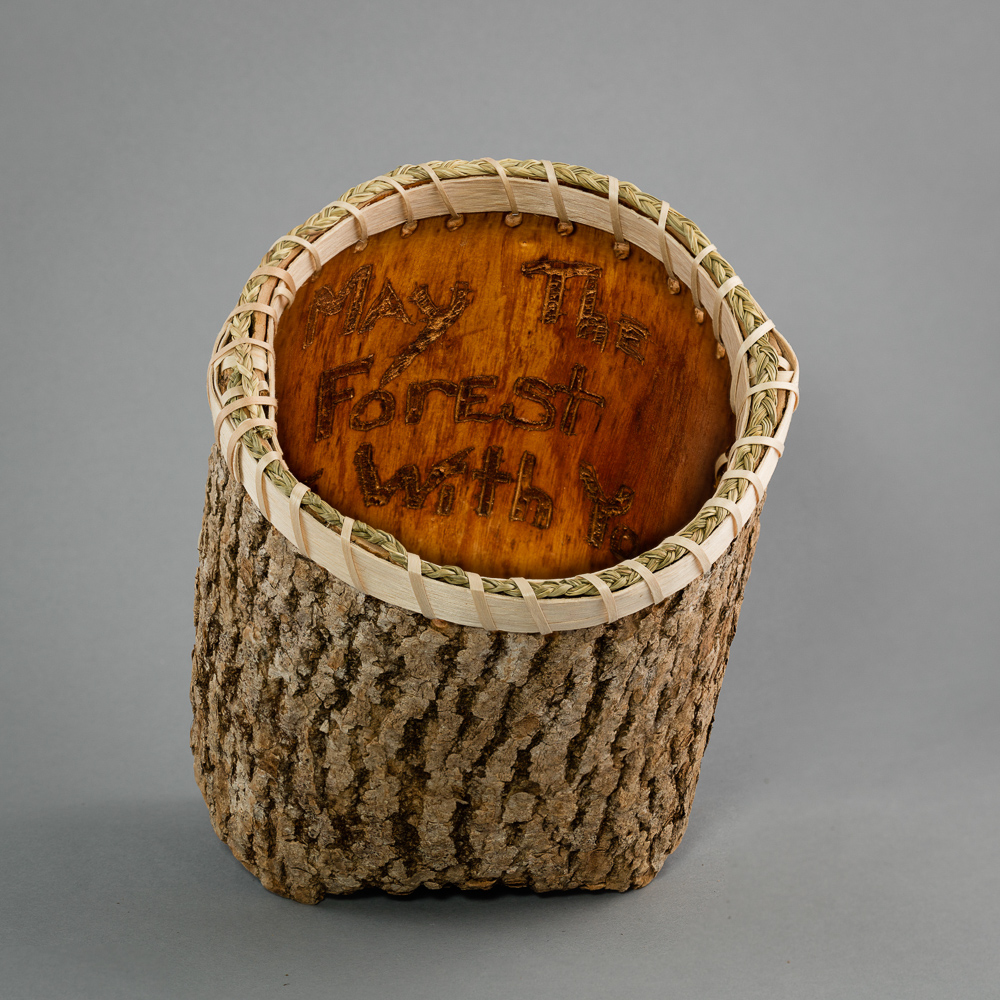
Kelly Church, May the forest be with you, Black ash bark and black ash splints, 7″ height x 5″ width,
Black ash bark baskets have etching inside created by oxidation. Bark baskets can only be made in late spring/early summer, when the sap is running. The bark on the tree is critical to the harvesting process, as you have to be able to recognize the bark of the black ash tree to be able to harvest your trees for basket making. The Emerald ash borer destroys the bark of the tree by tunnelling under the bark as larvae, and boring out of the bark once they become adults.
These baskets will be teaching tools for future generations to be able to learn to recognize the bark of the black ash tree, after collected seeds have been replanted for future generations. One basket tells facts about our black ash trees and the Emerald Ash Borer, and the other has the leaves of the black ash tree drawn inside, as another way to identify your black ash trees in the summer months.
Birch bark bitings
Birch bark bitings are made with summer birch bark, which is harvested from the paper (white) birch tree when the strawberries are growing.
There are 15-20 layers in birch bark. I peel each layer apart, down to one layer. Each piece is folded once and up to four folds and bitten with my eye tooth. How many times it is folded depends on what design I am biting.
I fold once for a butterfly or dragonfly, three times for a flower, and I fold it four times to bite a turtle design. You are literally “drawing” with your teeth by biting impressions into the bark. So, realizing that, you need to connect your teeth to your mind in your thoughts.
Authors
 Kelly Church is from Match-E-be-Nash-She-Wish Band of Ottawa and Pottawatomi of Michigan, Grand Traverse band of Ottawa and Chippewa descent. She currently lives in Hopkins, MI. She is a full-time artist and weaves daily. She also teaches youth her traditions and hope to create future generations of artists and teachers.
Kelly Church is from Match-E-be-Nash-She-Wish Band of Ottawa and Pottawatomi of Michigan, Grand Traverse band of Ottawa and Chippewa descent. She currently lives in Hopkins, MI. She is a full-time artist and weaves daily. She also teaches youth her traditions and hope to create future generations of artists and teachers.
 Cherish Parish resides in St. Clair Shores, MI. She studied Languages at the University of Michigan and spends free time weaving baskets. Cherish is Kelly’s daughter.
Cherish Parish resides in St. Clair Shores, MI. She studied Languages at the University of Michigan and spends free time weaving baskets. Cherish is Kelly’s daughter.
Kelly and Cherish are currently exhibiting in the travelling show “Hearts of Our People-Native Women Artists” which is currently at the Frist Museum in Nashville TN. It will travel to the Renwick Gallery in DC, and its final stop will be at the Philbrook in Tulsa OK.

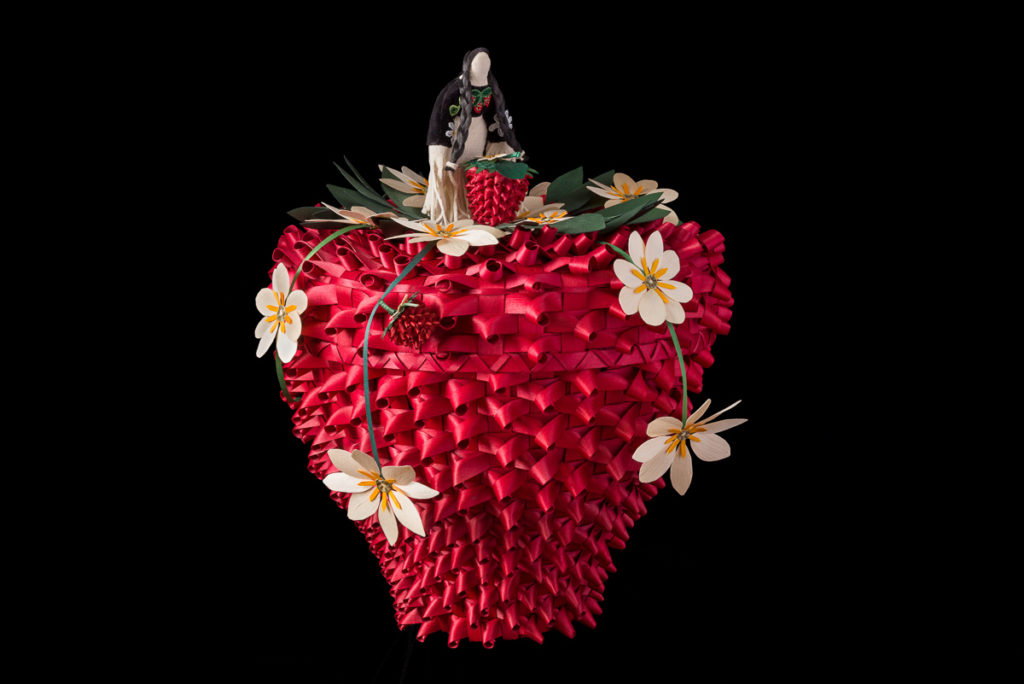

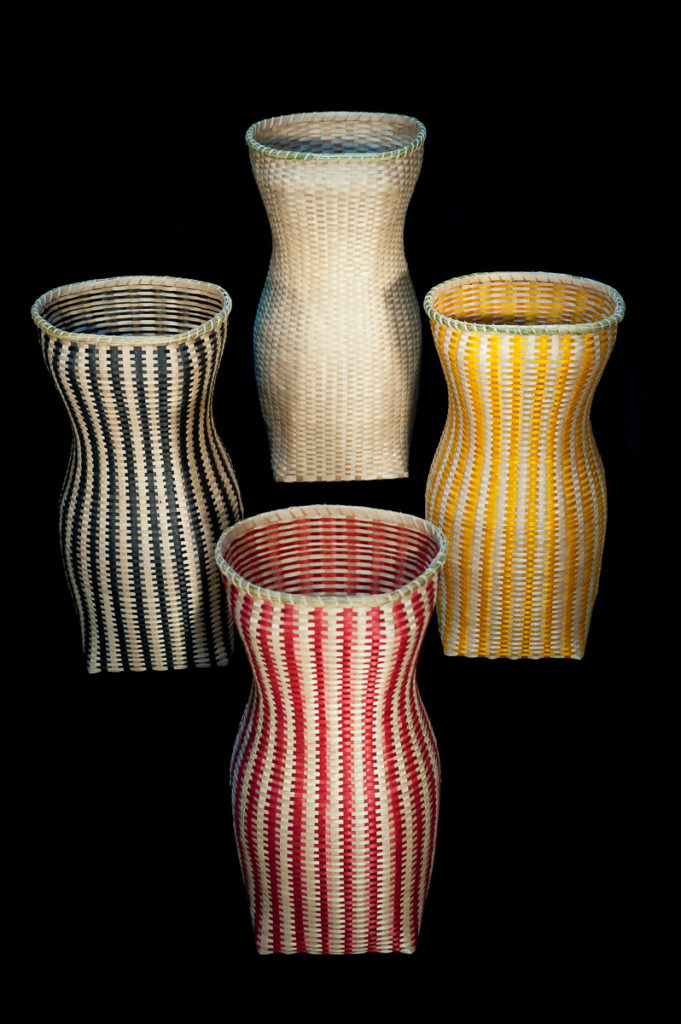
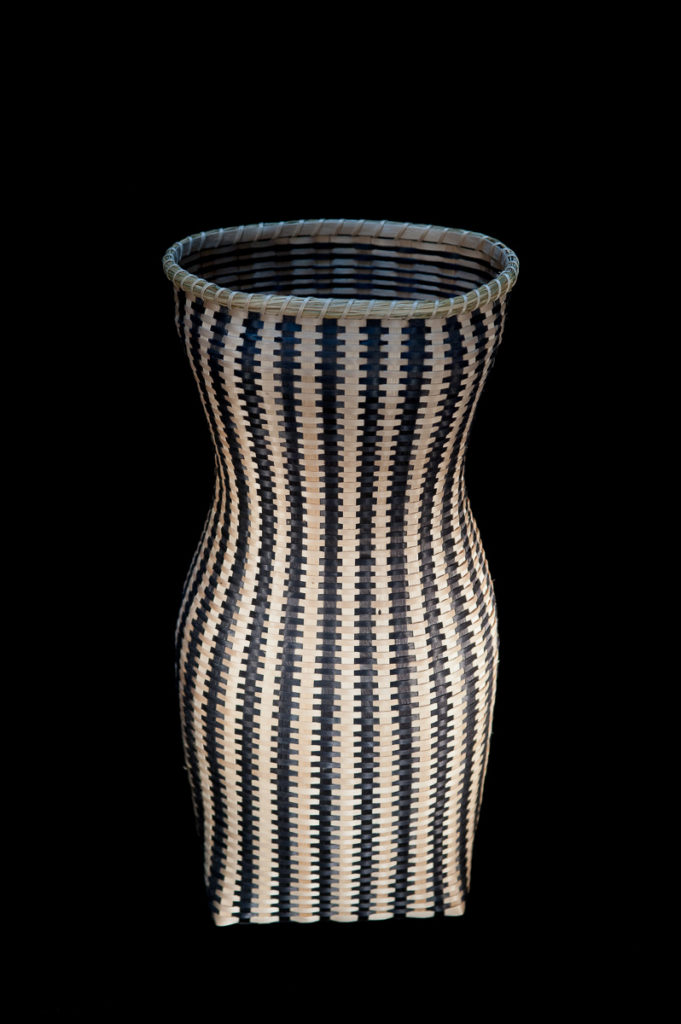
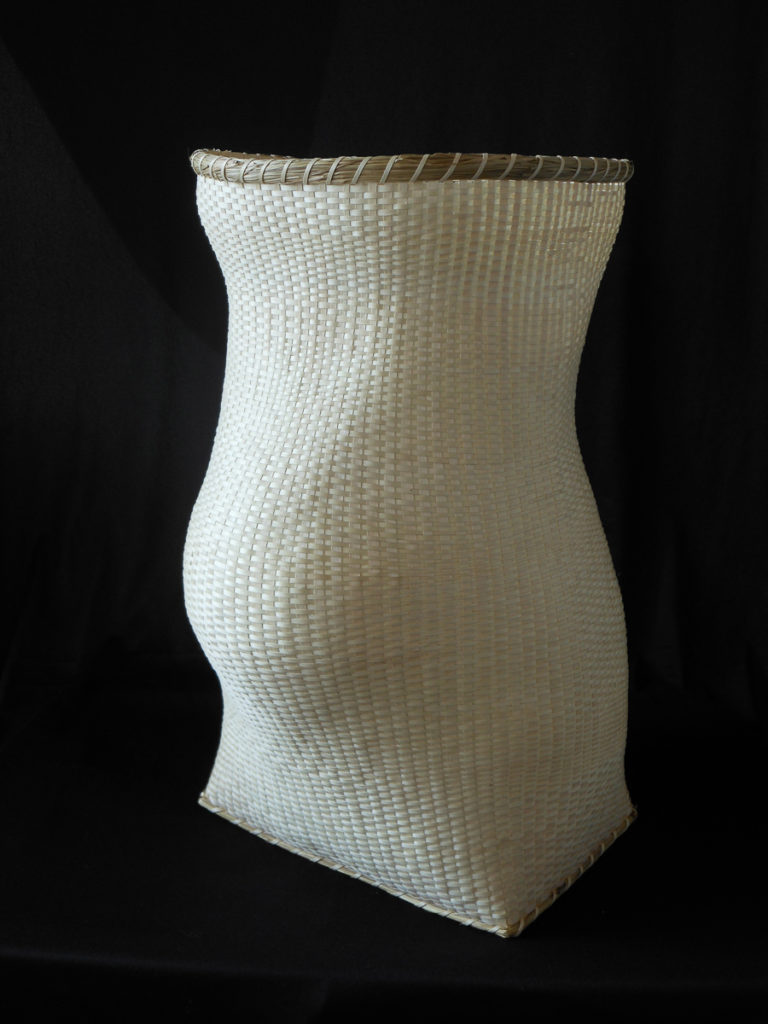
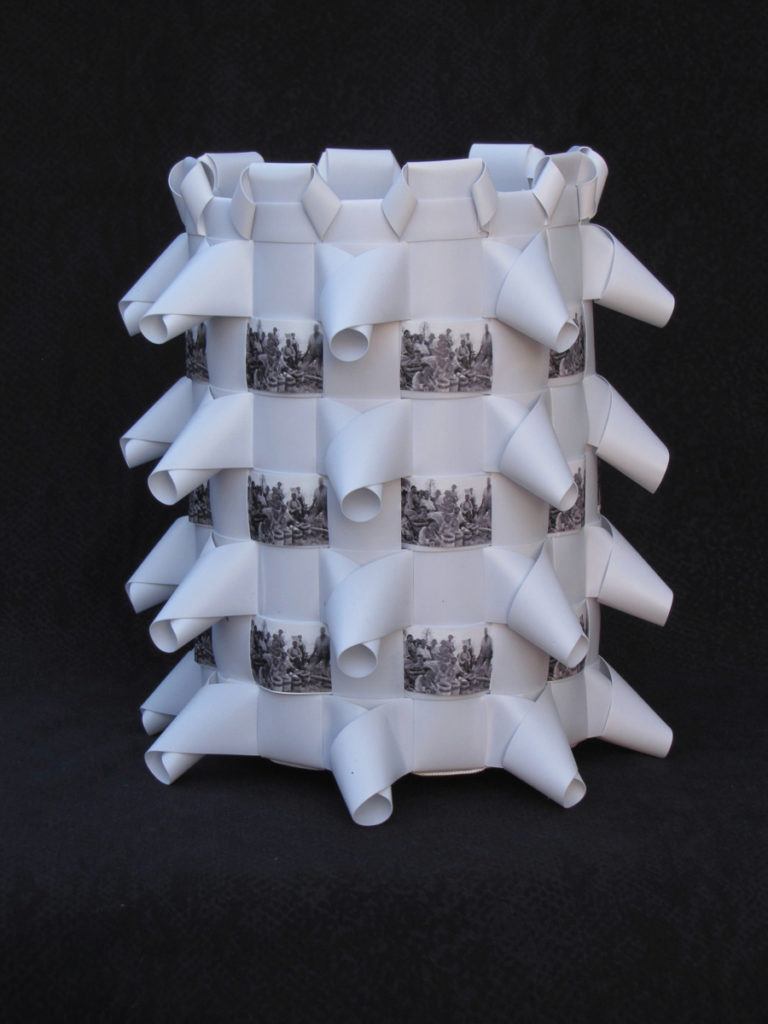
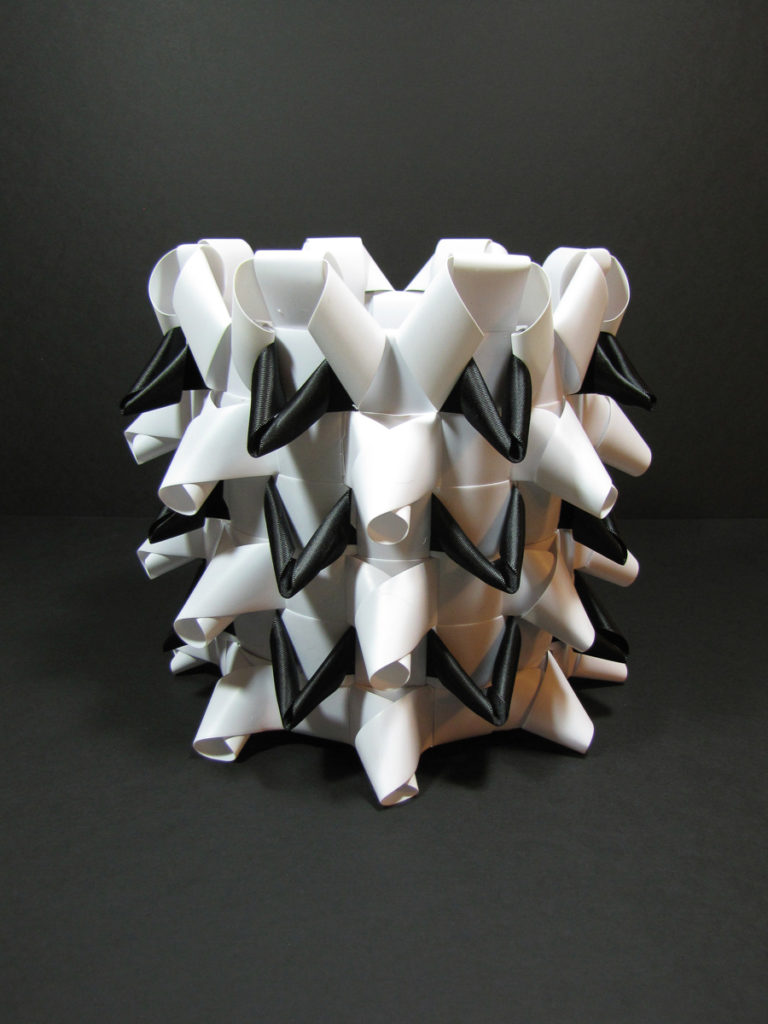


Comments
Thank you so much for the story. I enjoyed learning about the history of ash splint baskets, basket-making, and the details and history of the trees.
I love this article. I like how the word for basket is Kookobanaagan in your Ojibway language ours in Makak, but Indaakoobiidebanaagan would be my great grandmas old vessel coganate to kookobanaagan. Our varieties our beautiful. Some words you can use in future content may be words like, wiisagaakwaamisan(black ash strips,wiisagaakwaatig (black ash), baagaako’ige (pound ash). Keep up the work girls. White and green ashes are very nice as well. Aagimaakwaatig for white ash aagimaakwaamisan for white ask strips. Yous make beautiful work. I’m not an internet knower but where to buy strawberry basket, Ode’iminimakak?